Equipment
Beyond limits: Carbon bending and the future of shaft manufacturing

My name is James, and I am an equipment junkie. Like many of you, I am also a (mediocre) golfer struggling to take my golf game to the next level. But since I’m not so keen on hitting the range or the gym, I’m always searching for the next big breakthrough to help me avoid excessive practice and golf lessons.
TLDR: I am back to report that I may have found the ultimate breakthrough involving how golf shafts are manufactured. It will sound mind-boggling and counter-intuitive, but the new technology involves controlling a shaft’s variables of weight, flex (CPM), and torsional strength (torque) all independently of one another. As if this alone doesn’t sound far-fetched enough, it also purports to control the subjective aspect of how stiff the shaft feels without affecting the other variables.
To the best of my knowledge, I never knew any of these were possible, but seeing (and feeling) is believing, though I’m still reeling from my recent experience. Moreover, I dare predict that the sheer novelty of this discovery has the potential to redefine the golf shaft industry as we know it.
Also, the article is long. You’ve been warned.
In A League Of Their Own
Over the years, I have reported on several golf innovations and technologies that made golfers sit up and take notice. Of those finds, let me briefly recap two products that especially stood out before I unveil my most recent discovery further below.
Starting at number three, I present the now-famous Autoflex shaft by Dumina. Introduced in early 2020 during the COVID epidemic, the small Korean company claimed that their shafts didn’t use any flex designations and are to be selected solely based on a golfer’s swing speed. Against conventional wisdom, the company claimed that a super flexible, ultralight shaft can improve distance and accuracy for golfers of all swing speeds. The AF shaft, with its mysterious Korea Hidden Technology (KHT), sounded too good to be true, but more often than not, golfers who braved the steep price and the hot pink color agreed that the shaft seemed legitimate. Many also credit it with creating a whole new category of soft and hyper-flexible performance shafts.
Next in the number two spot is the groundbreaking FreeFlex shaft from SJ Golf Lab, also out of Korea. When the FF shafts surfaced in early 2023, I first thought they were a slightly improved version of the Autoflex. At weights and flex even softer than the AF, the shafts also improved distance and accuracy at a lower price point than their counterparts.
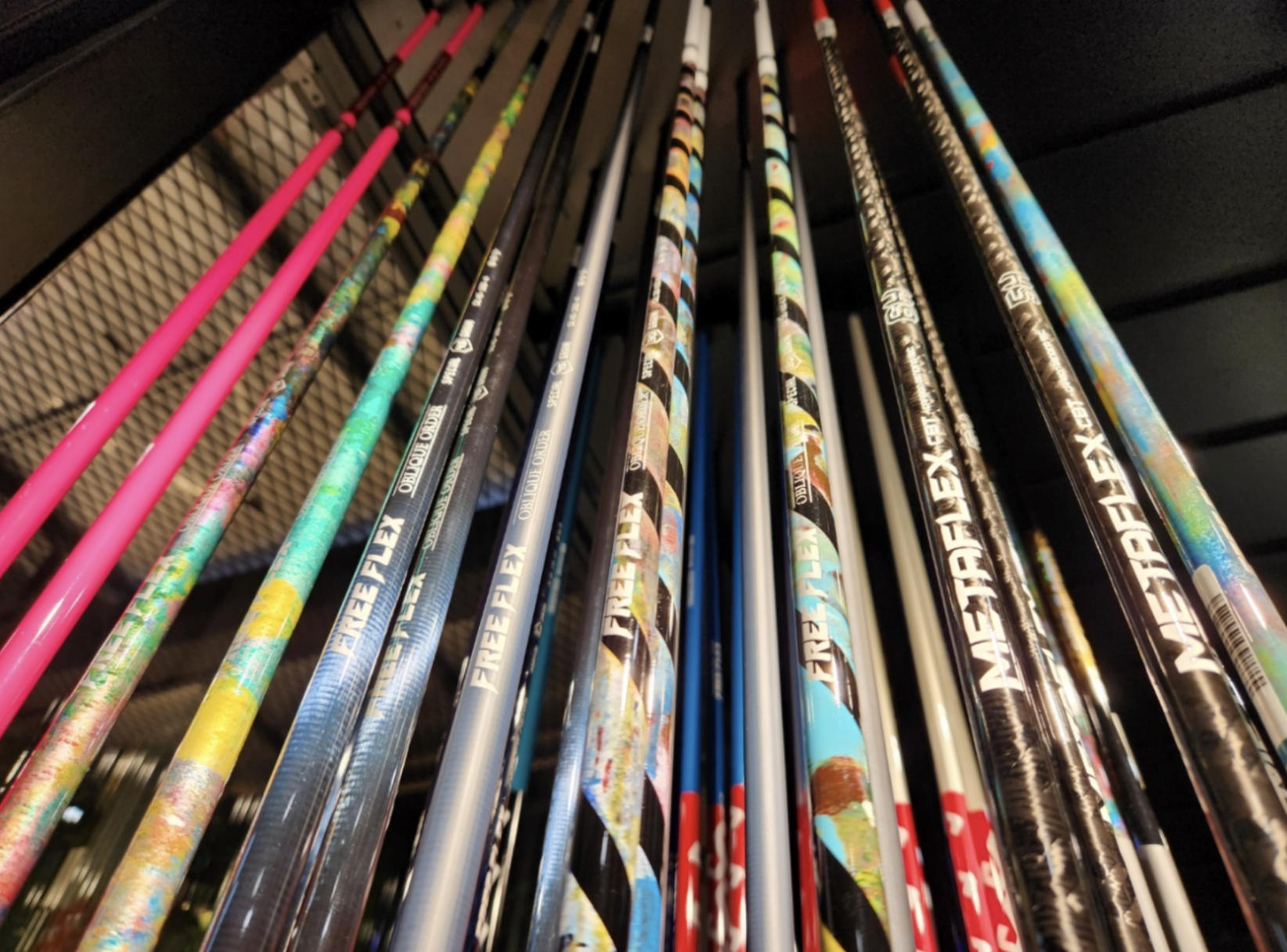
Upon delving further, FreeFlex Technology (FFT) was far more amazing than I could have ever imagined. Against the norm, the inventor of FFT claimed that a shaft’s weight, flex (CPM), and torque are NOT relative to each other and that each variable can be controlled separately. According to SJ Lab, a lightweight, flexible shaft with a strong torque was possible, and vice-versa. The incredulous claim went largely unnoticed at the time, but the folks at SJ Lab recently decided to prove their technology by introducing the ultimate unicorn of a shaft.
Aptly named ‘Hammer Throw’ the rubber-like shaft featured a conventional shaft’s weight of 62g yet measured only 140 CPM to be incredibly soft and flexible. To top it off, it also featured a strong 3.5 torque similar to an S-flex shaft, all unlikely numbers that have never been combined in a single shaft before. The Hammer Throw proved to be a wonder shaft for slower swingers, helping to increase club head speed, distance, and even accuracy.
Ultimately, SJ Lab redefined the concept of ‘shaft customization’ by proving that a shaft’s WT, CPM, and TQ can be controlled independently to any degree.
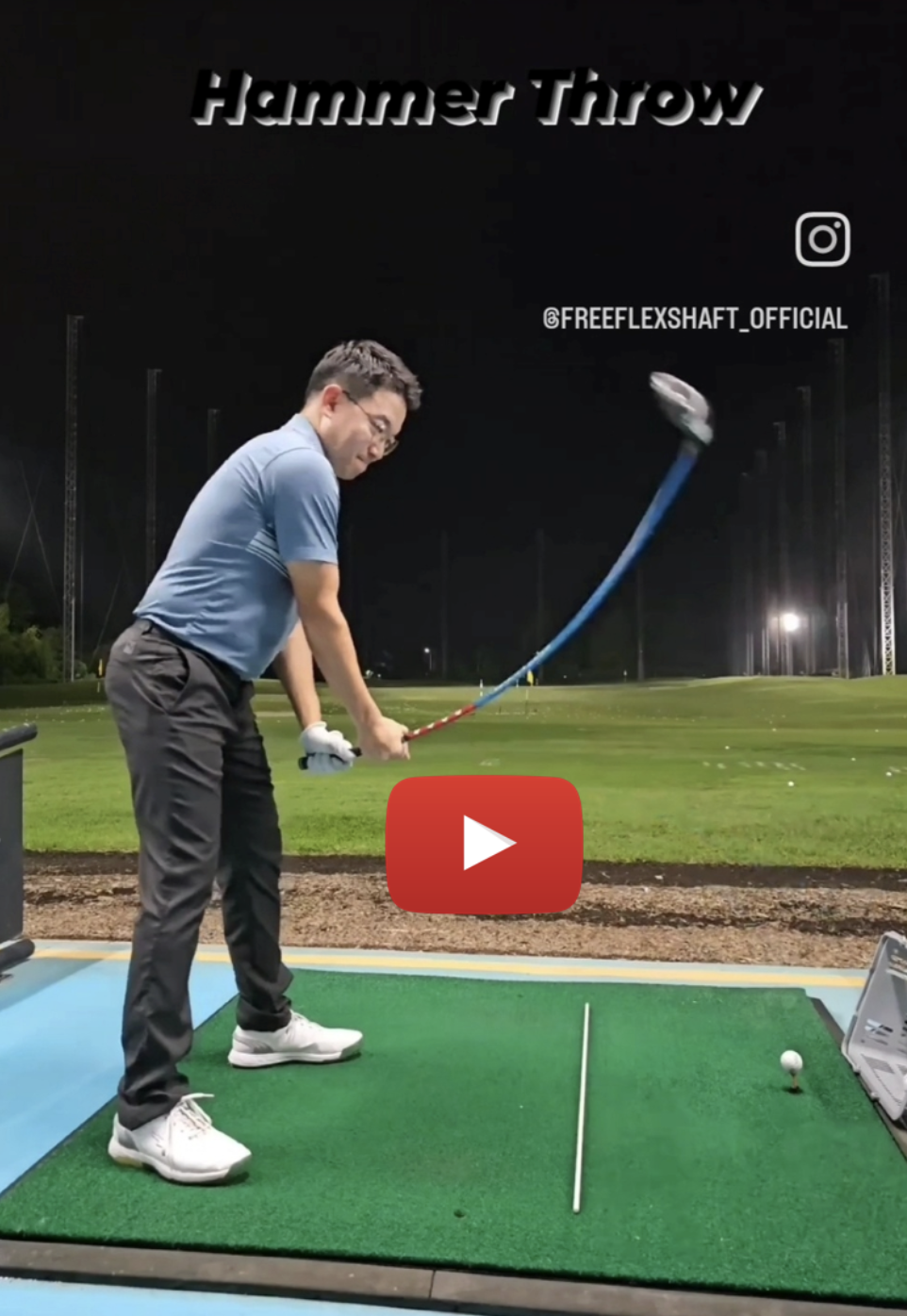
Featuring SJ Golf’s FFT technology, the Hammer Throw and FF38 also caught the attention of many WLD athletes with swing speeds over 150mph.
Mind-Bending Revelation
The AF and FF shafts are indeed quite amazing, but what I’m about to share with you may be an even bigger discovery than both of them combined.
It was a Thursday afternoon in October when I arrived at SJ Golf Lab. I had just finished a round of golf that morning and felt flush after having bested my buddies on a tough track. I was to cover the story of a new line of putter shafts (based on the Chaos Theory in physics, no less) and was looking forward to seeing if it could help my putting.
I was making small talk with Dr. Choi, the inventor & CEO of SJ Golf Lab, when a courier arrived to hand him a sealed envelope. Inside was a patent certificate for a new golf shaft manufacturing process, which was to be featured in SJ Lab’s latest MetaFlex series of shafts.
“Oh, that sounds interesting” I said politely. “Is it like FreeFlex technology?”
What came next was a barrage of information so contradictory and yet so transformative in its revelation that I forgot all about the putter shafts.
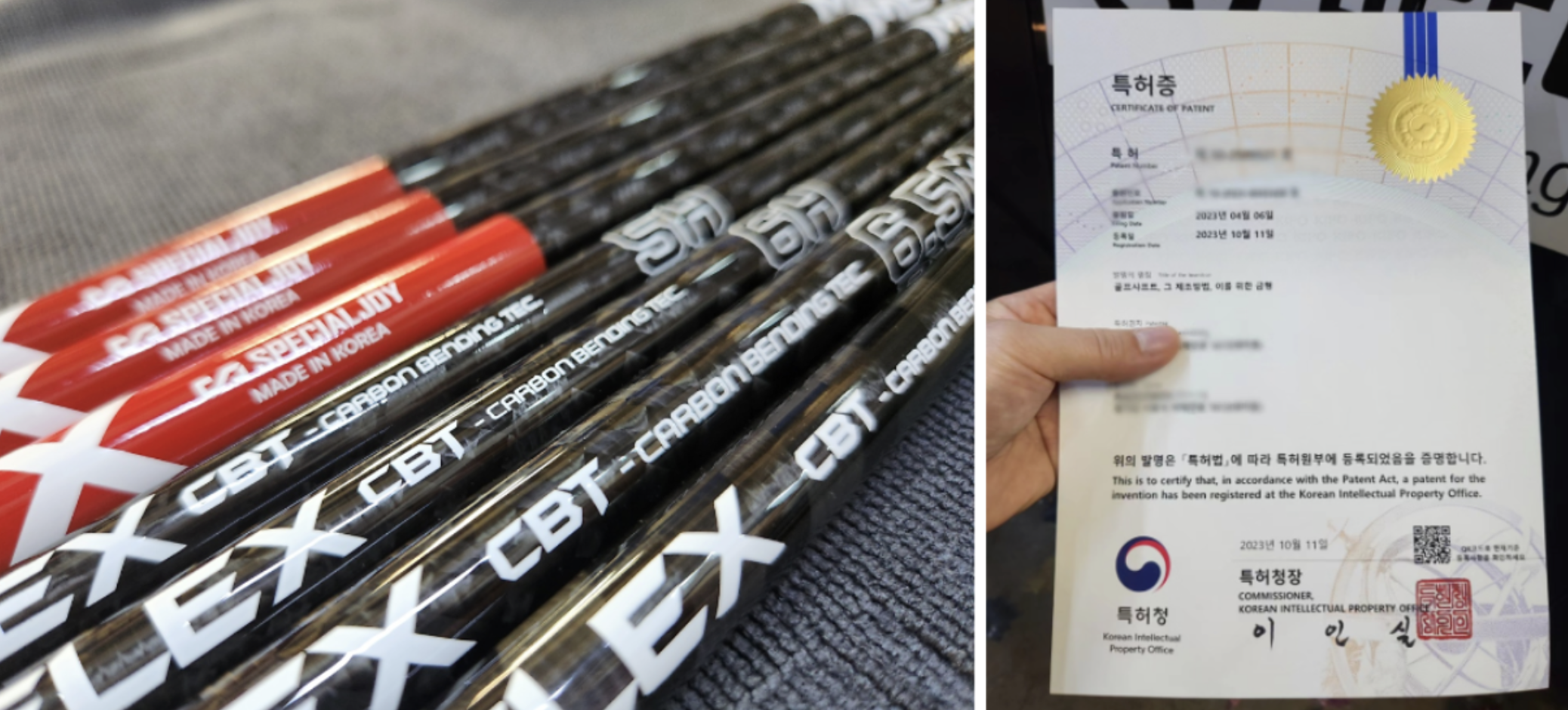
Entering The Realm Of The Senses
Carbon Bending Technology (CBT) is the latest brainchild of Dr. Choi, the inventor of FreeFlex shafts. As incredulous as his FFT may seem, his new CBT technology takes it even further by stating that a fourth variable, the shaft’s level of firmness, can also be controlled independently of the other variables.
“CBT technology involves bending or wrapping carbon in a certain way to control how stiff a shaft feels, independently of weight, flex, and torque.” – Dr. Seung-jin Choi, inventor of CBT Technology
Take a moment to let that sink in. Not only is he saying that the objective values of WT, CPM, and TQ can be controlled in any manner desired, but he can also control the subjective aspect of how firm a
shaft feels.
If CBT technology is legitimately possible, the implications of his discovery are immense and may well change the way golf shafts are made. Needless to say, such a spectacular assertion begs the question, “How can such an improbable idea be possible?”
As I struggled to comprehend what I just heard, Dr. Choi handed me a shaft and asked me to try and bend it. Grabbing it at both ends, the shaft felt light and soft, and I was able to bend and flex it easily. I was then given another shaft and asked to do the same. The new shaft felt much firmer from the get-go, similar to what I’d expect from a typical S-flex shaft. When I said that the second shaft felt much stronger than the first, I was in for a rude awakening.
“They’re the same shafts” Dr. Choi said. “The only difference is that the second one was treated with the CBT process. Other than that, both are practically the same in CPM and torque.”
“What do you mean these are the same shafts? This one is definitely stiffer.” My eyebrow arched in puzzlement at such a blatant contradiction.
After all, I was holding both shafts in my hands, and no one in the world was going to convince me that these two had the same CPM and TQ measurements.
The skepticism in my voice must’ve been obvious as I was led to a measuring device. I wish I could’ve seen the look on my face at that exact moment when my eyes confirmed both shafts to have the same CPM and torque.

Two same-looking shafts measured similarly in CPM and torque, despite one feeling much stiffer.
Goosebumps broke out on my arms, and my brain felt numb. Stunned, I took turns grabbing each shaft by the ends and bent them over and over again. There was absolutely no doubt that one was stiffer than the other. It wasn’t even close. Yet, if the numbers don’t lie, how was I to reconcile the two empirical facts at odds with each other before my very eyes?
Seeing Is Believing… Or Is It?
After repeated measurements to ensure I wasn’t dyslexic, I regained enough sense to sit down with Dr. Choi to hear more about the sorcery of carbon bending.
ME: How does CBT differ from your earlier FFT technology?
CHOI: CBT came as a result of golfers loving our FreeFlex shafts with the FFT technology but wanting even more. The FFT allows us to control the weight, flex, and torque independently. We used this discovery to design a new breed of shafts that help all levels of golfers increase club head speed and distance. But some of the stronger, faster-speed golfers were eventually turned off from it, as they couldn’t get accustomed to the soft feel and flex. The fear of spraying the ball all over the course was just too much.
To solve this issue, I looked at many factors that led golfers to describe whether a shaft is soft or stiff. Similar to FFT, I soon discovered that a shaft’s stiffness is not relative to its CPM value. By reinforcing a shaft through a special process I call carbon-bending, it can be made to feel as stiff as I wish without changing the original CPM or torque.
ME: (blank stare)
CHOI: Did that answer the question?
ME: Uhh… no? What do you mean the CPM doesn’t change? If the shaft became stiffer, it means the CPM value must have increased, doesn’t it? How we perceive stiffness is subjective, so we measure the CPM value objectively with a machine. That way, we can compare the CPM values of different shafts to see which one is stiffer with the higher number.
CHOI: Normally yes, but like I said, how stiff the shaft feels does not have to correlate with the CPM. They are independently controllable. As I just showed you with the two shafts earlier, both measured at the same CPM and torque. It was only when I applied the CBT method to one of them that it became stiffer than before, as you have seen for yourself.
ME: Yeah, I’m still not sure how that is, feeling firm in my hands but the machine reading it as soft. Is this like the cat in Schrodinger’s box, where the cat is both alive and dead at the same time? This shaft is also both soft and firm simultaneously?
CHOI: Not quite. But how about this? What if the CPM measurement we currently use to gauge and compare stiffness between shafts is not the only method? What if there were other ways that we haven’t considered to control the feeling of firmness?
ME: So you’re saying you discovered a new way to objectively measure how we feel or perceive stiffness?
CHOI: I think it’s better to say that I realized that a shaft’s CPM and stiffness can be independent of each other, whereas before, we thought they were directly relative. It led to look for other ways to make the shaft firmer, which is what I did. In the process, it also made me think, what else are we missing? Maybe we’ve been limiting ourselves in believing there’s nothing new left to discover.
Shaft Manufacturing 101
According to Dr. Choi, the method of manufacturing carbon shafts has remained largely unchanged since 1979, when Taylormade first introduced the first graphite shaft that offered many advantages over conventional steel shafts. Since then, various new materials and technologies have made the shafts lighter and stronger, but the basic shaft-making process remains the same.
The making of a modern golf shaft consists of wrapping layers of prepreg (treated carbon fiber) sheets around a steel shaft (mandrel). As more layers are applied, the shaft becomes progressively thicker and heavier (WT), which makes the flex (CPM) stiffer and increases the torsional (TQ)
strength.
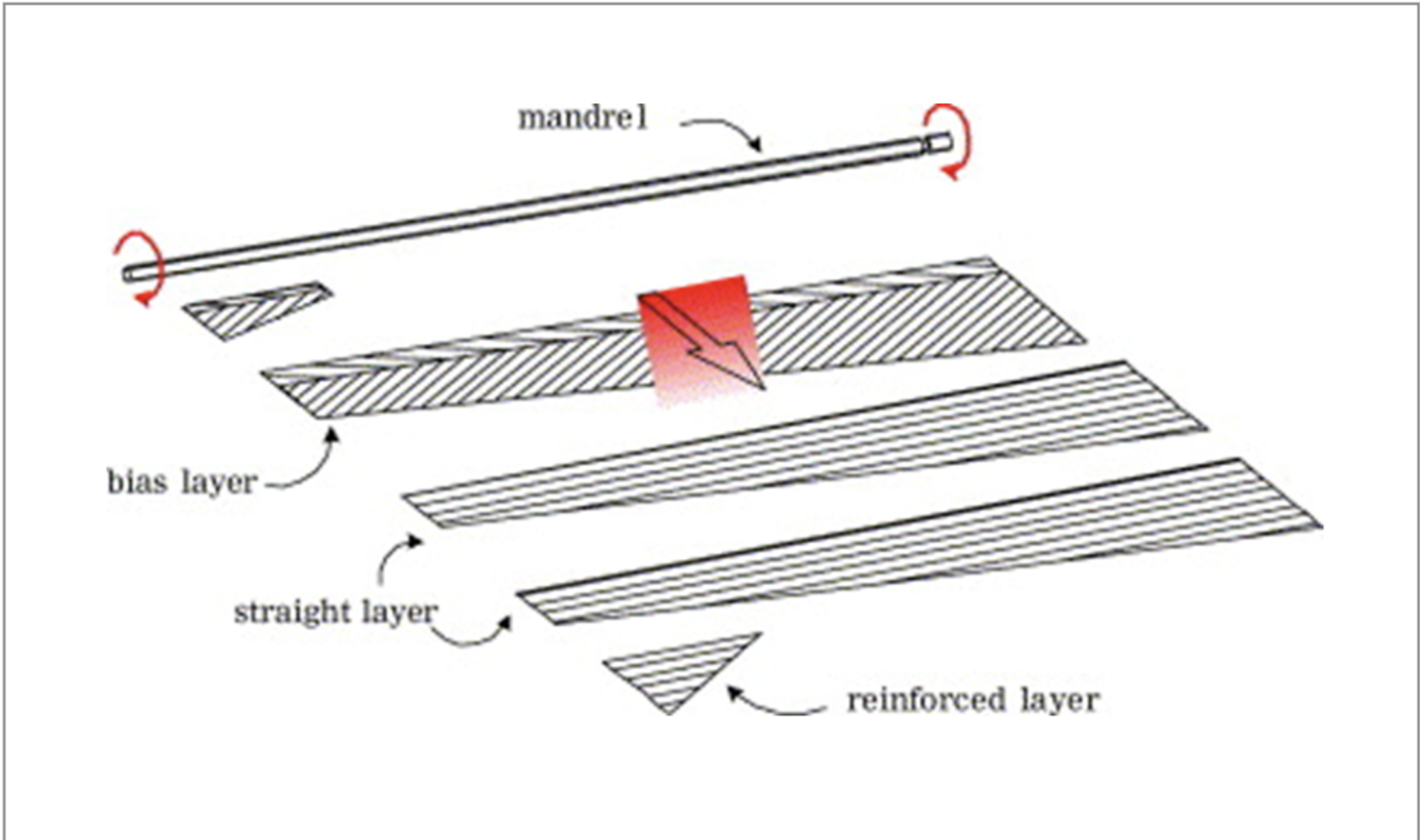
The characteristics of a shaft depend on the amount of material and how each layer is oriented on the mandrel. How this is done varies among OEMs.
The current method and its proportional relationship between WT, CPM, and TQ is widely accepted. However, it also presents a big challenge for shaft-makers, whose main goal is to make shafts that improve distance with more accuracy. This is because generating more club speed for more distance necessitates a light and flexible shaft; while improving shot accuracy requires the shaft to be firm in both flex and torsional strength.
To balance the trade-off as best they could, OEMs have continually researched new materials and higher-quality carbon, along with their own, often secret, ways of weaving and arranging the carbon prepreg. A good example to illustrate shaft improvement in this manner is the lighter 50-gram range of X-flex shafts, which were a rarity only a few years ago.
At least for now, 5X shafts seem to be the pinnacle of conventional shafts that can be made with the existing process.
Shaft Manufacturing 2.0
In physics, Force equals Mass multiplied by Acceleration (F=MA). The same can be applied to golf at impact, but since a golf club is designed to be in motion, its dynamic energy is calculated as Impulse=MAT, where T is the time the ball stays in contact with the club face.
Dr. Choi explained that increasing any of the three factors would transfer more energy to the ball (I).
In other words, by making the club head heavier (M), faster (A), and getting the ball to remain in contact with the clubface longer (T), the distance will increase as a result.
Now that we can get faster club head speed (FF shafts), how can the shaft be made to feel stiff while retaining a longer distance? The solution was surprisingly simple, as most discoveries tend to be at first.
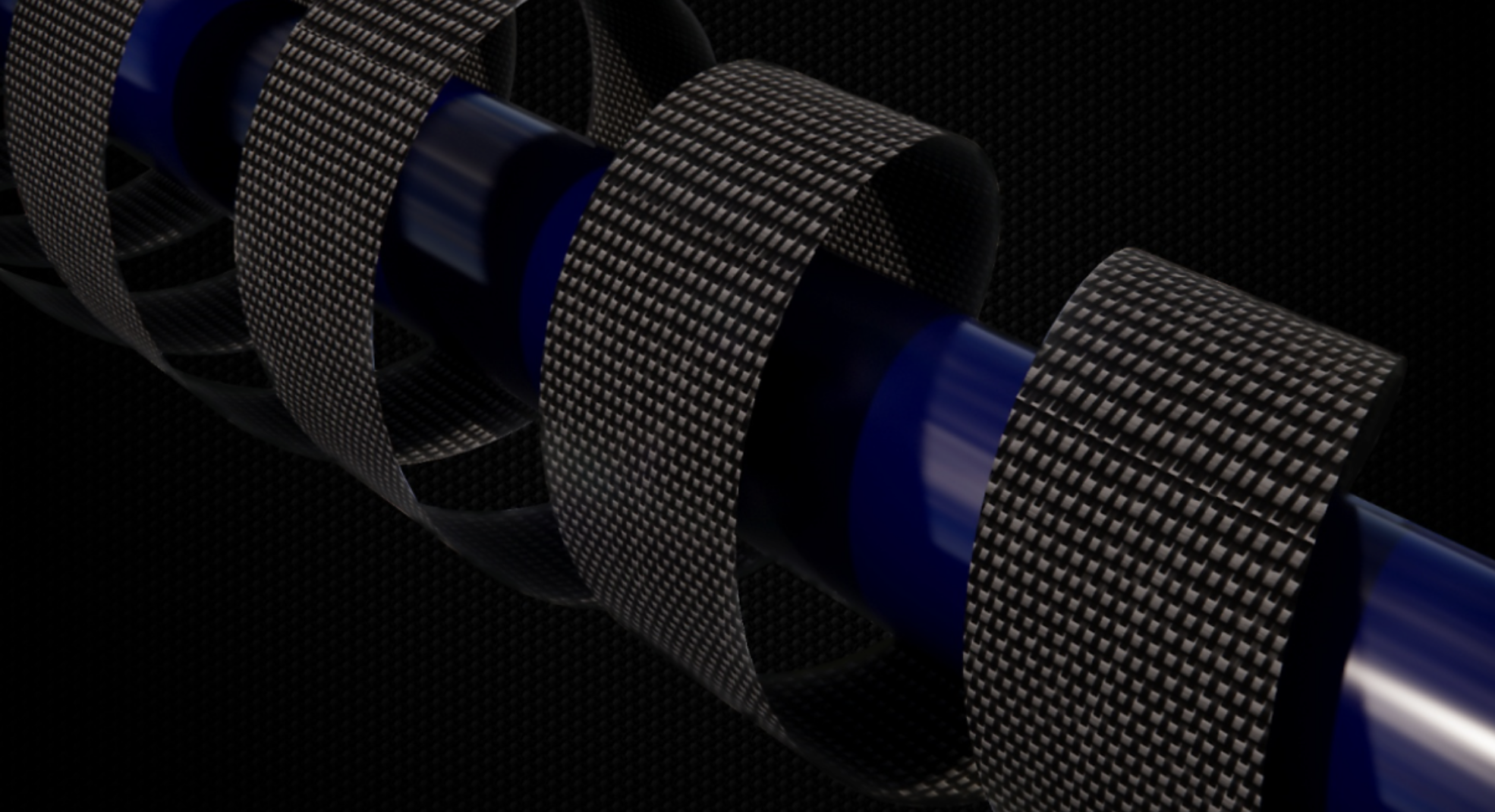
“Imagine wearing a pair of skin-tight nylon stockings,” Dr. Choi said. “It’s tight, but you can still move and bend your knees easily.” Truth be told, I’d never worn stockings before, but I nodded to see where it would lead.
“If you were to put on one more, your legs will feel stiff, and with yet another, it’ll now be very difficult to even bend your knees,” he was building up towards a big reveal. “But no matter how stiff your legs now feel with the layers of stockings, you can still rotate them.” Come again?
“When you try to sit down, the legs will stick straight out like they’re in a cast, right? But you’d still be able to twist or rotate your leg [left and right] because the stockings are not exerting force in that direction.”
Dazed at the anticlimactic turn, I tried to recall the last time I had a cast but he plowed on. “The original characteristics of your legs don’t change because of the stockings. They’re still your legs, which are bendy and flexible.”
I may have missed a whole lot there, but loosely translated, CBT technology is like adding tight pairs of stockings to make a shaft feel firmer, but won’t change what the original shaft was in terms of
torque or CPM.
Helical Carbon Armour
Carbon bending involves a new step in the shaft manufacturing process, where a thin strip of carbon is helically wrapped tightly around the shaft to increase stiffness. This new sheath of armor will firm up the feel of the shaft but will not affect the CPM or torque. In addition, Dr. Choi’s in-depth research further showed that the width of the strip band and the spacing between the helical spirals all played a part in changing the characteristics of the shaft in minute ways.

Each shaft has been treated with CBT and using different carbon weave, band width, materials and alignment to display a unique characteristics that can be tailored to a golfer’s swing
The truly mind-blowing prospect of CBT, however, is its ability to create an endless number of unique shafts with specific performance characteristics. For example, the number of new shaft possibilities can reach tens or even hundreds of thousands, depending on various factors, including but not limited to the width and thickness of the band, the spacing and orientation of the helical spiral, the weave pattern of the band fabric, and each of the different materials that all of these factors can be applied to.
“Can you imagine a PGA tour pro being able to dial in a golf shaft to squeeze 99.9% of the performance potential from their favorite shaft, without giving up anything they prefer in WT, CPM, TQ, and now FEEL?” – SJ Golf Lab 2023
If It Looks And Barks Like A Dog?
Several days later, I returned to SJ Lab to test the new MetaFlex CBT shafts. The lineup consisted of three driver shafts of 5H, 6H, 6.5M, and iron ix90 shafts (H for high kick, M for mid-kick). Again, the MF series is designed for faster-speed golfers who swing at least 100mph to well over 120mph. I purposely asked not to see the shaft specs beforehand, as I wanted to remain neutral in determining how the new shafts felt and performed.
Waggling the 5H shaft first, it felt similar in weight and flex to a typical R-shaft. I usually average a smooth swing of about 95 mph with my FF38, but the 5H shaft instinctively made me try to swing harder to compensate for the firmer feel. The good drives launched high and carried as far, with spin between 1900~2000 rpm. As I warmed up, I was hitting it quite well, despite swinging a bit harder than usual.
I had grown accustomed to swinging smoothly and in tempo with FF shafts, so it felt good to swing hard again and not worry about the head catching up. The overall distance was comparable with my own driver at 240~250 yards, so I guessed the 5H specs to be about 220 CPM and close to 4.0 torque. On the downswing, the shaft reminded me of the many 5S shafts I had been using before being turned onto softer shafts. I imagined I could play it well, but struggle to keep it straight on the back nine when I gradually get tired.
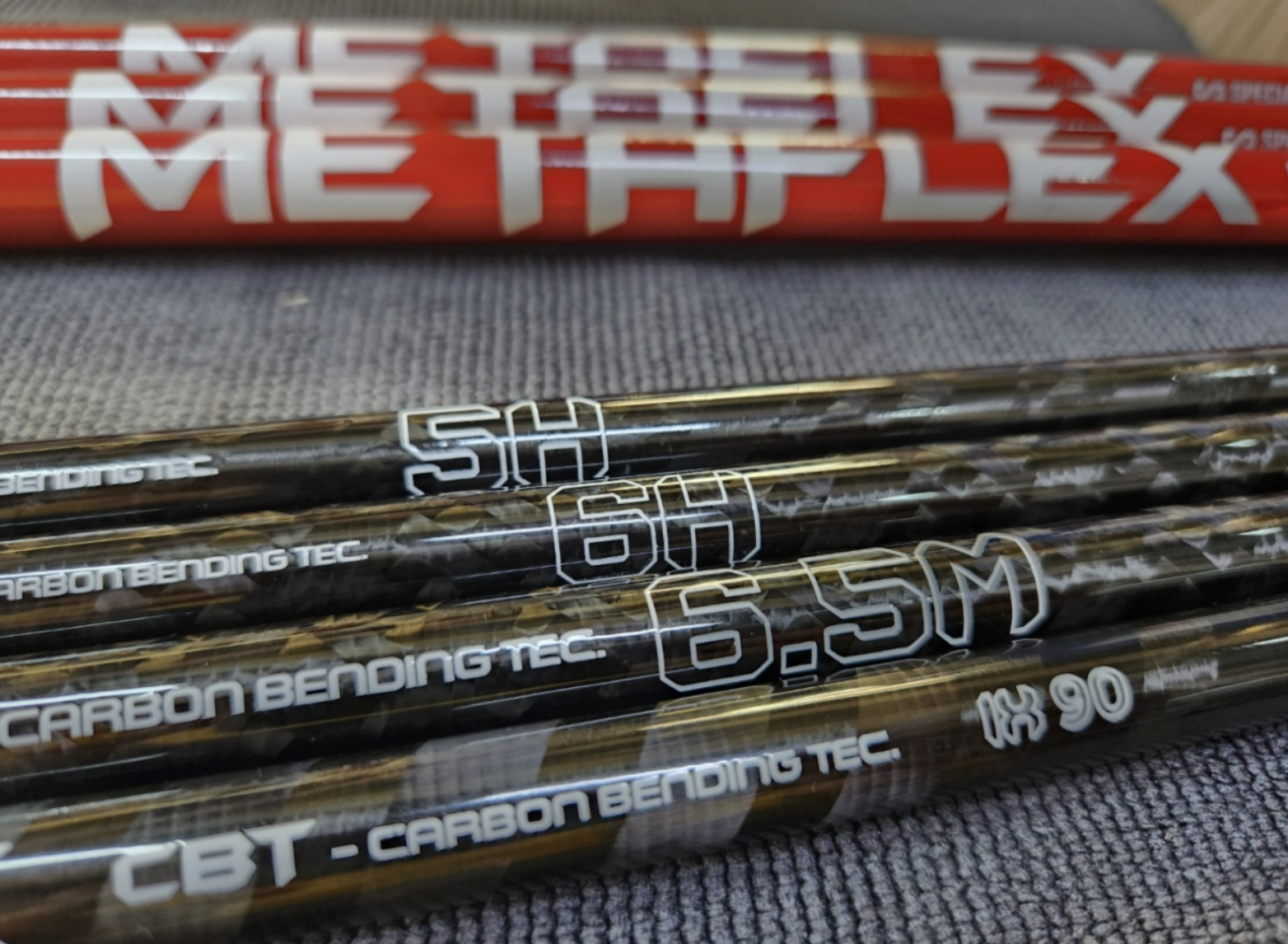
Next, the 6H shaft felt like a conventional 5S on the waggle, but much stiffer like a 5X shaft on the actual downswing. I guessed it to be about 230~240 CPM and 3.5 in torque, as I was only able to turn the club head over about one-third of the time. I got a couple out to 240 yards but the rest of the shots varied from a fade bordering on a slice interspersed with low pulls. I felt the shaft demanded more speed for it to show its potential, and my slower speed wasn’t making it sing as it should.
Lastly, the MetaFlex 6.5M told me right away that it was out of my league. The waggle reminded me of a Ventus or a Tensei shaft, and the actual swing was even stiffer and closer to a 6X shaft. As expected, my shots were mostly pushed dead right, as I couldn’t effectively load the shaft with speed.
When I tried to force the head to turn over, I’d overcompensate to flip the wrist and pull it low left. The few that managed to land on the fairway barely traveled 210 yards with a noticeable decrease in ball speed. I can usually muster enough muscle to make a typical stiff shaft work over nine holes at least, but the 6.5M felt like an iron rod.
Overall, MF shafts’ waggles felt similar to conventional aftermarket shafts and felt even firmer during the actual swing.
I was now ready to see the actual spec measurements of the three shafts.
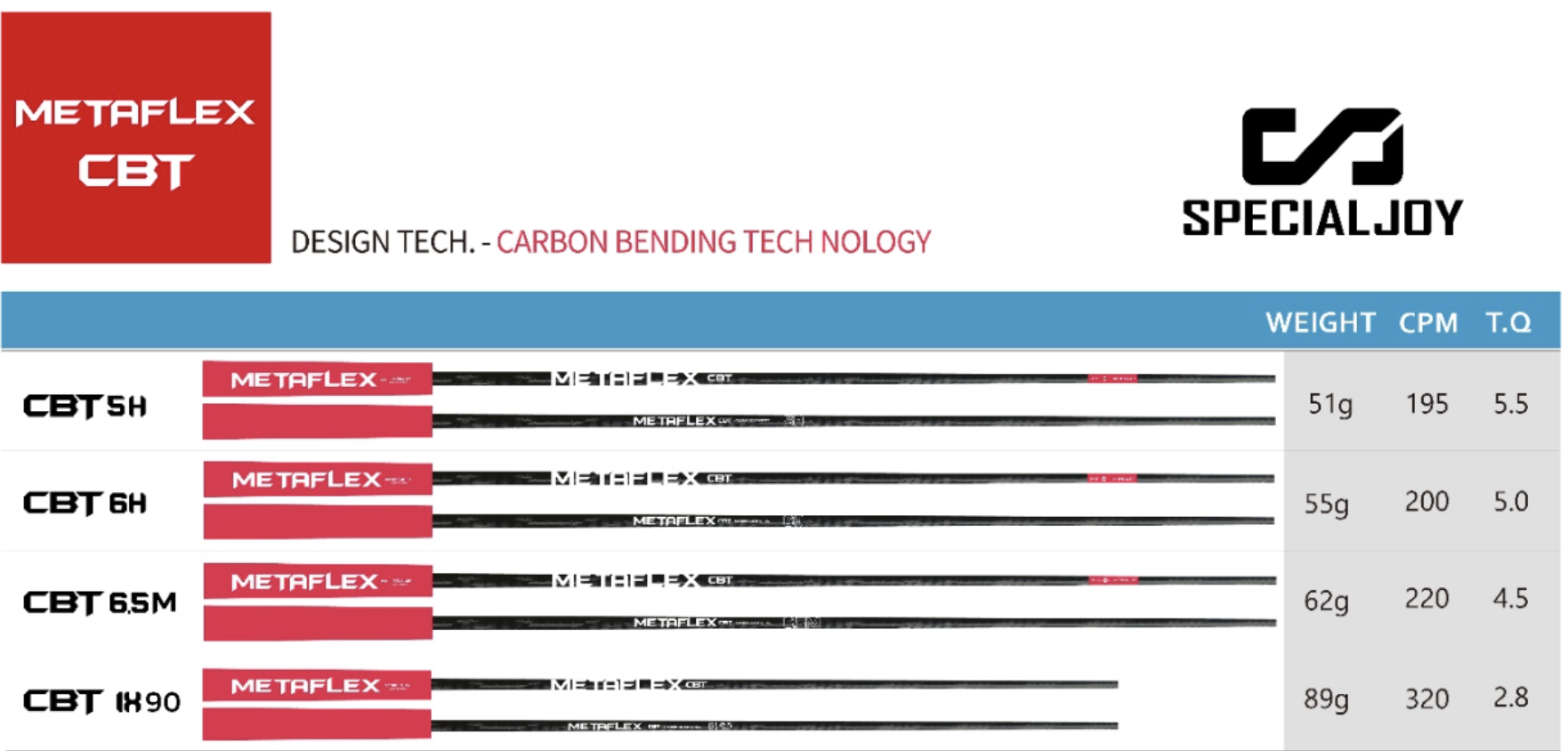
I could never have imagined such numbers corresponding to the firmness I experienced with MetaFlex shafts.
“There’s no way these numbers are the actual specs,” I protested. “These are softer than my FF38, so how…?” Hearing my voice hit a high pitch, I quickly closed my mouth. I already knew to expect something different, but this? Trying to reconcile the stiffness with such low numbers was just as difficult as it was the first time I encountered this phenomenon.
For lack of a better comparison, imagine picking up a cute kitten to hear it purr, only to be shocked at hearing it bark like a big angry pitbull with its tail stepped on. Does this mean I can no longer use phrases like “seeing is believing,” What will happen to “if it looks like a dog and barks like a dog?”
More importantly, what does this mean for the future of golf shafts?
Implications For The Future
Deep down, I believe every golfer wants to increase their driver distance. It doesn’t matter if you average 150 yards or 300 yards. As golfers, the need to hit it farther is in our DNA.
Since discovering that longer, easier distance (and accuracy to boot) is possible with the advent of AF shafts, I’ve never looked back. When FreeFlex shafts debuted earlier this year, I switched all my shafts throughout the bag and couldn’t be happier. I’ve received dozens of similar emails from golfers who read about my experiences and took the plunge, mostly to their pleasant surprise.
As amazing as the shafts are, some scoffed at the absence of such shafts on professional tours. If they’re so good, why aren’t they used more? After all, a distance gain of 10 yards on drives can mean as much as 5-10 percent closer to the pin on approach shots for shorter putts, which can translate to millions of dollars in winnings. In fact, dozens of pros from all major tours have tried them, some openly and some in secret.
As a recreational golfer, I can live with an occasional OB if it means consistently out-driving my friends. But an elite tour pro for whom a single stroke may be worth millions? Not a chance. Even the best can become a psychological wreck if the shaft flexed more than Arnold Schwarzenegger in his prime. Especially on the back nine of a major on Sunday afternoon.
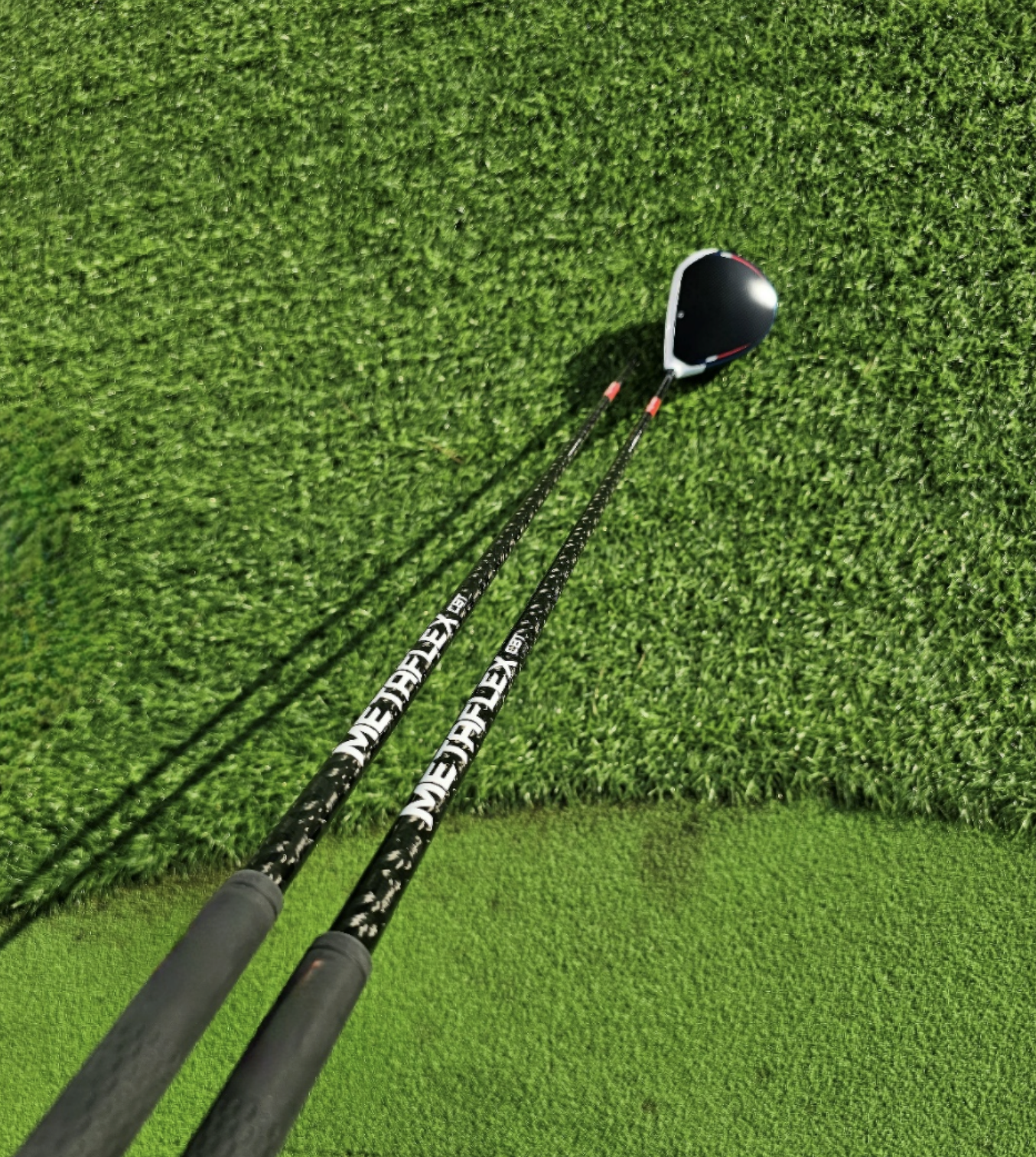
But for the sake of argument, let’s suppose there exists a shaft that truly offers longer distance and accuracy of the soft FF shaft with the reassuring feel and playability of a stiff shaft. Better yet, what if your favorite shaft can be readjusted to fit all of your needs for maximum performance output and feel preferences? I’d bet my last Pro V1s that elite professional golfers will stop at nothing to have them tested and optimized to benefit each of their own swing metrics and performance. It’s in their DNA.
Dr. Choi also mentioned that he is nearing completion of his state-of-the-art swing and shaft diagnostic system, which can prescribe precisely the type of shaft (weight, flex, torque, feel, kick, kitchen sink?) needed for a player. And he builds it to that specification. Customization to the fullest.
As the company’s name implies, that is the ultimate goal of SJ Golf Lab and Dr. Choi, who hopes his shafts will come as a “Special Joy” for each and every golfer.
All in all, CBT certainly felt to me like the next evolutionary step in golf shaft technology.
So, what do you think? Can we trust the accuracy of the statements made by SJ Golf Lab? I would love to hear from other golfers and knowledgeable shaftoids in the industry, and what it can mean going forward.
- LIKE128
- LEGIT23
- WOW43
- LOL10
- IDHT2
- FLOP6
- OB2
- SHANK22
Product Reviews
Three Swing Challenge: Testing the Titleist Vokey WedgeWorks A+ grind

The first wedge has made its way to the Three Swing Challenge! This week we have the WedgeWorks A+ grind that was recently released by Vokey. BK is looking for a new 60-degree wedge, and this could be a contender.
Why three swings?
Many years ago, the legendary Barney Adams, founder of Adams Golf told us this:
“My formula as a fitter was three shots only. I discounted No. 1 just because it was the first one, counted 100 percent of No. 2 and discounted No. 3 because the player was starting to adjust.”
- LIKE1
- LEGIT1
- WOW1
- LOL0
- IDHT0
- FLOP0
- OB0
- SHANK1
Whats in the Bag
Daniel Brown WITB 2024 (July)

- Daniel Brown WITB accurate as of The Open Championship.
Driver: Ping G430 LST (9 degrees)
Shaft: Fujikura Ventus Blue 6 X
3-wood: Ping G430 Max (15 degrees)
Shaft: Fujikura Ventus Blue 7 X

(Image courtesy of SMS on Tour)
Irons: Ping i230 (3), Ping Blueprint S (4-9)
Wedges: Ping s159 (50-12S, 54-12S, 58-06T)
Putter: Ping PLD
Grips: Golf Pride MCC
Ball: Titleist Pro V1
Info an images via SMS on Tour.
- LIKE11
- LEGIT3
- WOW1
- LOL0
- IDHT0
- FLOP0
- OB0
- SHANK0
Equipment
Collin Morikawa’s pre-Open equipment adjustments

Editor’s note: This is an excerpt from a piece our Andrew Tursky originally wrote for PGATour.com’s Equipment Report. Head over there for the full article.
Three years later, Morikawa has once again changed his irons to deal with the unique Scottish turf.
Morikawa has been using TaylorMade P730 blade short irons (7-PW), P7MC mid irons (5-6) and a TaylorMade “Proto” 4-iron with a cavity-back construction this year.
However, he switched into a new set of TaylorMade P7CB irons (5-PW) before finishing T4 at last week’s Genesis Scottish Open, to go along with his familiar “Proto” 4-iron. TaylorMade’s P7CB irons are the finalized versions of the “Proto” 4-iron that Morikawa has been using, except they remain unreleased to retail.

According to TaylorMade, Morikawa switched into a full set of the new P7CB irons to aid with turf interaction, just like he did prior to his 2021 Open victory.
Morikawa is honing in on his winning formula overseas.

Morikawa also has switched from his usual TaylorMade Qi10 5-wood to a lower-launching TaylorMade P790 3-iron equipped with a Project X HZRDUS 105 Hybrid shaft. The loft of the club has been bent down to 19 degrees.
TaylorMade says that Morikawa switched into the new driving iron In order to “have an option to hit something lower that will roll out in the fairways.”

Head over to PGATour.com for the full article.
- LIKE21
- LEGIT2
- WOW1
- LOL2
- IDHT0
- FLOP0
- OB0
- SHANK1
-

 Product Reviews1 week ago
Product Reviews1 week agoThree Swing Challenge: Testing the Edel Array F-2 putter
-

 Equipment1 week ago
Equipment1 week agoWhat clubs do equipment free agents choose to use on tour? We found out
-

 19th Hole3 weeks ago
19th Hole3 weeks ago‘You’re right, we’re always wrong!’ – Sergio Garcia receives warning during Open qualifier
-

 News2 weeks ago
News2 weeks agoHighlights from the Wilson Golf Product Testing and Fitting Experience at Pinehurst
-

 News2 weeks ago
News2 weeks agoDavis Thompson’s winning WITB: 2024 John Deere Classic
-

 Equipment2 weeks ago
Equipment2 weeks agoQ&A: The truth behind Bryson DeChambeau’s new Avoda irons from company founder Thomas Bailey
-

 19th Hole1 week ago
19th Hole1 week agoMajor champ ‘disappointed’ not to be chosen as U.S. Ryder Cup captain
-

 Whats in the Bag3 weeks ago
Whats in the Bag3 weeks agoCam Davis’ winning WITB: 2024 Rocket Mortgage Classic



















geohogan
Nov 28, 2023 at 2:07 pm
Gerry Hogan’s patent that resulted in the Nunchuk, Tri Zonal graphite shaft
led the way for changing stiffness of graphite shafts by changing the way the layers of carbon were wrapped, not by use of exotic expensive graphite.
As Ben Hogan said, “Reverse every natural instinct and do the opposite of what you are inclined to do”
Jake
Nov 20, 2023 at 11:57 am
If I could still order drivers with a $20 x100 shaft in it, I would. Beyond that the most accurate driver I’ve ever played had a hickory shaft.
TousJapon
Nov 18, 2023 at 12:49 pm
Do you notice how the Japanese don’t ever hype their stuff like this with lies? Amazing how well they do without all this superfluous hyperbole, huh? lol
kyjelly
Nov 18, 2023 at 2:01 am
Dude knows nothing about Seve. I wish he would quit pretending. If you’re a Korean Yank, why would you even care about Seve
gobo
Nov 17, 2023 at 11:45 pm
i read this whole thing just to realize it’s just a normal table rolled shaft like everything else.
Jisgood
Nov 17, 2023 at 9:38 pm
Yeah we’ll stick to buying Japanese ones thanks
E
Nov 17, 2023 at 9:37 pm
Koreans can’t make anything unless they copy somebody else’s
geohogan
Nov 17, 2023 at 10:42 am
Gerry Hogans patent on golf shafts involved wrapping the central section to allow more bending than the tip and butt. The Nunchuk shaft was the result.
One shaft for juniors, ladies, amateurs and pros. PGA winners played and play Nunchuk
That patent ran its course and others have followed with similiar designs.
Billy Mays
Nov 17, 2023 at 9:19 am
How much did free form pay for this infomercial? “Goosebumps broke out on my arms, and my brain felt numb.” LOL